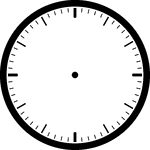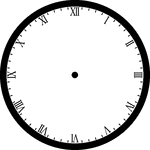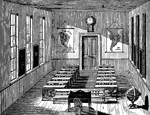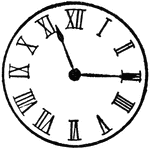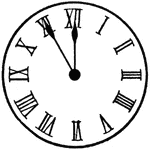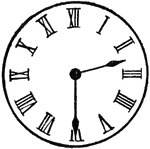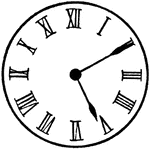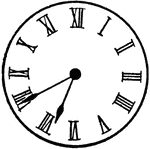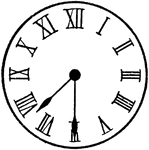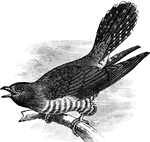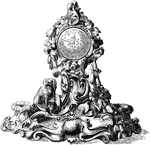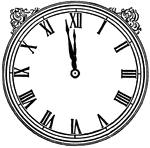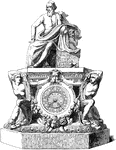
Clock
This clock is engraved and used as a centerpiece to a candelabrum. The figures are made of bronze and…

Clock
This clock is made out of bronze with a design of a group of figures supporting a starry globe, with…
Barocco Clock-Case
The Barocco clock-case of the 17th century had a case for protecting the interior work against dust…

Modern Clock-Case
This Modern clock-case was made with metal ornaments. It was Dome-shaped and crowned by a small bell-turret.

Modern Clock-Case
This Modern clock-case had a hanging-case intended for both weight and pendulum clocks.

Toilet-Stand Clock-Case
This Toilet-stand clock-case was made during the German Renaissance in 1597. A slender tall cabinet,…

Toilet-Stand Clock-Case
This Toilet-stand clock-case was made during the German Renaissance. Made of various colored wood, it…
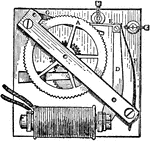
Dial Driving Device
An illustration of Hope Jone's dial-driving device. "Each time that a current is sent by the master…
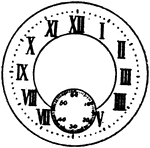
Watch and Clock Dial
This dial features a clock face which is the part of an analog clock that displays the time through…
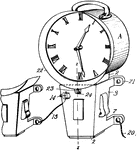
Secondary Electric Clock
This is a timepiece that shows the time of the day, using a small electric motor
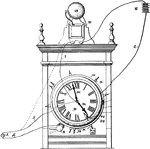
Electric Energy Clock
An electric clock is a clock that is powered by electricity instead of powered manually or by other…

English House Clock
"A front view of a common English house clock with the face taken off, showing the repeating or rack…

Lever Escapement
"Waltham Lever Escapement. A device for the governing of speed is the one thing on which accurate time…

The Fusee
"A key is used to turn the cone, B. By doing so it wraps the chain around the cone and tightly coils…

Gravity Train Remontoire
"E represents the scape-wheel turning in a minute, and e its pinion, which is driven by the wheel D…
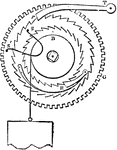
Harrison's Going-Ratchet
"The click barrel-ratchet R is set upon another larger ratchet-wheel, with its teeth pointing the opposite…
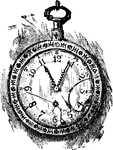
Martha Washington's Bridal Watch
Watch belonging to Martha Custis Washington (June 2, 1731 – May 22, 1802), the wife of George…
Pendulum
"A pendulum has a strong tendency to maintain its plane of oscillation, a fact that has been used in…
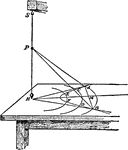
Polar Dials
In polar dials, the shadow-receiving plane is aligned parallel to the gnomon-style. Thus, the shadow…

Quarter Clock
"The front view of a large quarter clock of Sir E. Beckett's design, with all the wheels on the great…
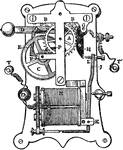
Electrical Remontoire
An electrical remontoire can be either a gravity or spring type. In it, the weight or spring is rewound…

Modern Capital at Rome
"Michel-Angelo assumed such considerable and prominent position by his genius and authority, that his…
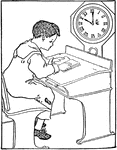
Telling Time 10:00 Story Problem
Illustration of a child reading at school at 10:00. It can be used to write mathematics story problems…
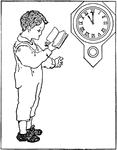
Telling Time 11:00 Story Problem
Illustration of a child reading at school at 11:00. It can be used to write mathematics story problems…
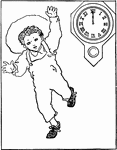
Telling Time 12:00 Noon Story Problem
Illustration of a child running at 12:00 noon. It can be used to write mathematics story problems involving…
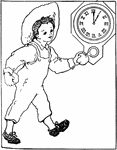
Telling Time 1:00 Story Problem
Illustration of a child walking at 1:00. It can be used to write mathematics story problems involving…
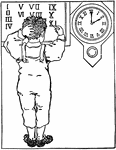
Telling Time 2:00 Story Problem
Illustration of a child writing roman numerals at 2:00. It can be used to write mathematics story problems…
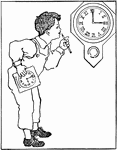
Telling Time 3:00 Story Problem
Illustration of a child making a clock face at 3:00. It can be used to write mathematics story problems…
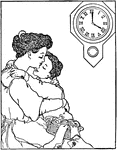
Telling Time 4:00 Story Problem
Illustration of a child hugging his mother at 4:00. It can be used to write mathematics story problems…
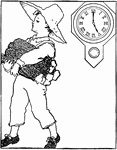
Telling Time 5:00 Story Problem
Illustration of a child hauling wood at 5:00. It can be used to write mathematics story problems involving…
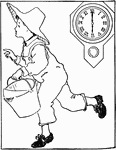
Telling Time 6:00 Story Problem
Illustration of a child running with a pail at 6:00. It can be used to write mathematics story problems…
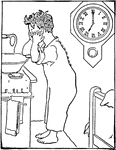
Telling Time 7:00 Story Problem
Illustration of a child washing face at 7:00. It can be used to write mathematics story problems involving…
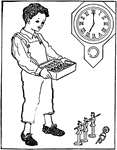
Telling Time 7:00 Story Problem
Illustration of a child playing toy soldiers at 7:00. It can be used to write mathematics story problems…
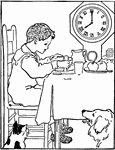
Telling Time 8:00 Story Problem
Illustration of a child eating breakfast at 8:00. It can be used to write mathematics story problems…
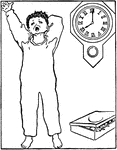
Telling Time 8:00 Story Problem
Illustration of a child yawning at 8:00. It can be used to write mathematics story problems involving…
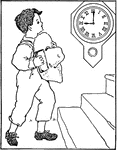
Telling Time 9:00 Story Problem
Illustration of a child going up stairs at 9:00. It can be used to write mathematics story problems…

Telling Time 9:00pm to 7:00am Story Problem
Illustration of a child sleeping all night: 9:00pm to 7:00am. It can be used to write mathematics story…
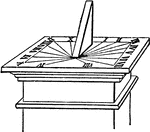
Sundial
A sundial is a device that measures time by the position of the Sun. In common designs such as the horizontal…
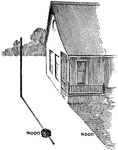
Modern Sundial
"A form of Sun-dial that is as god to-day as any dial for determining noon." -Bodmer, 1917
